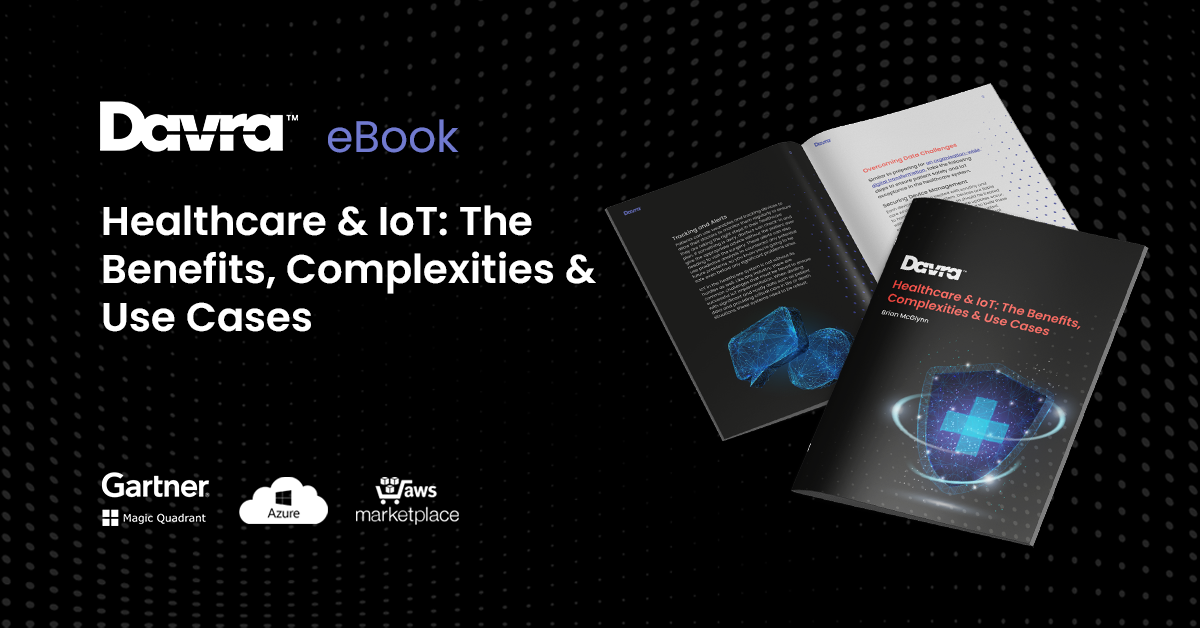IoT in Healthcare Use Cases eBook
Download Your Free IoT in Healthcare Use Cases eBook
Read More


In the grand scheme of applied IoT solutions, where do factors like sustainable development stand? Should companies and cities spend their time refining the hardware tools that power their data acquisition, resource management and compliance governance, or are they better served by focusing their efforts on the software that lies beneath it all? If success revolves around creating network ecosystems that further the goals of professional users, then who sets the standard that defines usability?
These sorts of riddles have spelled trouble for business leaders since long before the IoT became a force for positive change. Today’s decision-makers, however, are armed with far better responses than their predecessors had. Chief among their weaponry is the progressive web app or PWA.
Why are PWAs integral elements of the contemporary IoT taxonomy? Here’s the answer to understanding the roles they play in growing a more vibrant, robust IoT landscape.
Progressive web applications aren’t exclusive to the IoT. In the wild, these apps take the form of games, business tools and everything else that might be found running on a consumer-grade mobile device or desktop. What sort of appeal could an app built for an end-user hold for an IoT prosumer? The key distinction is that PWAs are designed to run the same way on any hardware or OS.
Originally created to help app makers capture more market share without having to write code for multiple platforms, the PWA standard and design philosophy took off like a rocket in the late 2010s. From desktops to tablets and phones, this software functions nearly identically thanks to a few important principles. Many of these concepts prove extremely useful in IoT settings.
PWA users can expect seamless experiences as they cross platforms. The app handles things like detecting device screen sizes, orientations and hardware capabilities.
Responsiveness is vital for IoT apps. In addition to supporting different users, PWAs are ideal for firms with BYOD, or bring your own device, policies. They may also be more usable with embedded systems that sport custom form factors.
People work faster with tools that accommodate their natural habits. During the course of a regular workday, a factory manager whose sole objective is to finish one task may need to tackle a dozen other unexpected emergencies. If they have to start over each time they come back to the first job, then they probably won’t get very far.
Progressive apps rely on service workers and other stateful components to realize uninterrupted workflows. Users can leave or pause secure in the knowledge that they’ll be able to pick things up right where they left off. Their ability to manage device caches also helps these apps tackle the latency issues that plague many Big Data applications.
One of the problems with modern IoT implementations is that accessibility comes at a price. Letting users interact with enterprise systems and data can expose companies to major risks, but such access is often essential to normal business.
Even though PWAs don’t solve every security hazard, they inherently fight some. Their strict use of HTTPS and avoidance of mixed content help close many of the gaps that might normally jeopardize distributed networks.
A quick glance at any corporate intranet will show that web apps abound, so why all the fuss over the PWA-based way of doing things? Simply put, time and experience have shown the advantages of the newer, sleeker approach.
Yes, an organization with the right knowledge can build a custom IoT app that satisfies many of its fundamental needs, and some firms take pride in the accomplishment. As far as business utility goes, however, trying to manage and use such tools is akin to learning to swim by diving into the choppy sea when land is nowhere in sight: The waters are far deeper than they look, and finding footing is practically impossible.
Without robust frameworks, such as application enablement platforms, also known as AEPs, it’s hard to create apps that are simultaneously optimized for employees, decision-makers and hardware. As such, many custom builds are constantly adrift. Caught between changing business demands and the forces of technological obsoletion, these systems grow bloated and slow as their maintainers strive to keep them relevant.
A great example of this is what happens when new tech shakes things up without prior notice. When automotive firms started making use of logic control systems in the 1960s, they needed specialized programming terminals and teams of engineers. While the personal computing revolution made life much easier just a couple of decades later, it also meant that these companies had to retool and adapt.
The world may be in love with smartphones and lightweight personal computers today, but the human-machine interfaces of tomorrow are likely to come out of the left field. Trying to predict the future is a fool’s errand, especially since consumer computing hardware trends are so fickle. Sticking to progressive web app principles might help enterprise IoT users stay on their toes.
Countless companies have already fallen into the trap of not being forward-thinking. Much to their chagrin, they’re stuck with apps that are decidedly not mobile-friendly, which often means they have to devote precious resources to running them on old systems. This is especially true for firms whose apps lack AEP integrations.
How can companies tell if they’re long overdue for an IoT app overhaul? One good sign might be that their software doesn’t work everywhere they need it to. For instance, if your enterprise uses desktops, tablets, mobile phones and big screens for various tasks, then your IoT dashboards, toolchains and networks should support all of these devices as well.
IoT apps must keep pace with their users, and this means staying abreast of current technology. Davra’s AEP makes it effortless to take the intelligent approach with native PWA support and the power of partners like Intel, Inmarsat Cisco and Dell. Get in touch to learn how to create a truly progressive IoT ecosystem.
Brian McGlynn, Davra, COO
Download Your Free IoT in Healthcare Use Cases eBook

Davra IoT is the only Industrial IoT Platform Available on AWS Marketplace
Read MoreThe Collaboration of Humans & Robots Has Created The Cobot
Read More